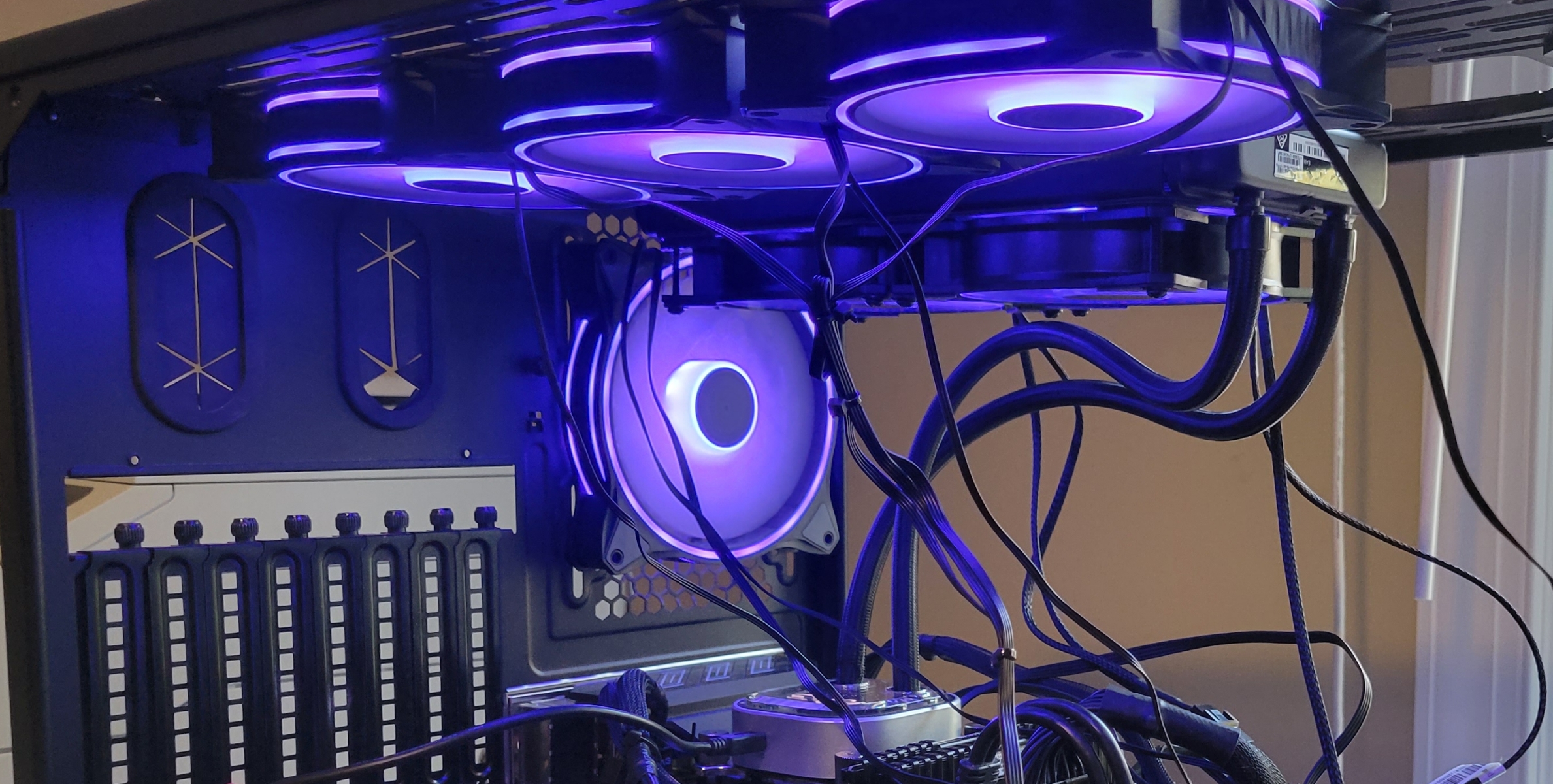
Liquid Cooling Experiments
Last Updated on February 9, 2024 by David Both
I currently have four computers that use liquid cooling. I use all-in-one (AIO) systems because I don’t really want to deal with the high probability that I would create a leaky monstrosity. The AIO systems work really well and generally keep my systems from 8 to 12 degrees Celsius cooler than air cooling. I determined this using the htop average CPU usage meter which I have configured to display average speed and CPU temperature.
The instructions for installing the AIO systems that I have typically say to mount the fans on the radiator in such a way as to force the cooler outside air through the radiator and into the body of the case. That has always seemed a bit counterintuitive to me because the AIO radiator heats the outside air and makes it hotter inside the case. It also means that the warm air rises inside the case as it tries to escape through the top. That means that the fans are working against the natural tendency of hot air to rise.
I have a constant full load on all of my hosts because they are all part of the World Community Grid and they perform tasks that keep them running at almost 100%.
So I decided to experiment a bit.
My Setup
For this experiment I used my second most powerful system. It has an MSI Z390-A PRO motherboard that is about 3 years old, 32GB of RAM, and an Intel Core i9-9900K CPU 3.60GHz 8-core processor with Hyperthreading for 16 CPUs, overclocked to 5GHz. I keep all of this in a Thermaltake Core X9 case that I usually leave the top, side, and front covers off because I like to change things frequently. The one in the link is white but I have the black version. This very flexible case makes this system one of the easiest to work on since I will need to reverse the fans.
The AIO cooler in this system is an EVGA CLC 240 with a 240MM radiator that takes two 120mm fans. Initially the radiator was mounted on the inside of the top of the case with the fans mounted to draw the air down inside as per the instructions. I also have 4 other 120mm fans in the top that pull the air up and out of the case, two 120mm fans moving air into the case from the front, and two 120mm fans exhausting air on the rear. This case is well ventilated with the front, right side, and top covers consisting of steel with many small 1mmx3mm oval vents punched in them and mesh screens installed behind the covers to further filter the air. Lots of air moves through this case especially with all the other fans I have mounted to move air through the case in addition to the ones on the top.
Ambient air temperatures in my computer room were usually about 30C during the time I was testing. Yes I have a lot of computers and they generate a lot of heat.
The Data
The initial readings on this system showed that the average CPU temperatures hovered around 79C to 81C with occasional variations of a degree in either direction. This range has been constant over the multi-year life of this system. This was the temperature range with the covers on or off.
I reversed the fans on the radiator to push the air up from the case interior and through the radiator which is still mounted on the underside of the top of the case. I also added some fine screen air filters between each fan and the radiator to reduce the amount of contaminants that might accumulate in the radiator. This reduced the processor average temperature range to 70C to 72C. This range was also consistent over a period of days.
I then became curious about the effect that replacing the covers. I started by adding the both side covers which resulted in a range of 70C to 72C with an occasional fluctuation to 73C. The right side cover is extremely well ventilated while the left side one is solid with a plastic window for viewing the interior.
My next step was to add the front cover which is also well ventilated. This resulted in a steady temperature of 71C with an occasional increase to 72C.
The final step was to add the top cover. This cover is also well ventilated. Adding it resulted in a steady temperature of 72C with an occasional fluctuation of 1 degree in either direction.
Conclusions
My initial hypothesis was correct in that exhausting air up and out through the radiator provides more efficient cooling than moving it through the radiator and into the case. In this experiment a significant difference of nearly 10C. As the case covers were added this was reduced by about 2C but still remains significant. Different cases with different construction and fan configurations will certainly produce different results but I still posit that using the fans in an exhaust configuration rather than to draw the air in and down is more efficient and results in more efficient cooling. The open case also provides a bit better cooling so I will be removing the sides again.
This experiment applies to top-mounted radiators. Side-mounted radiators typically mount so the fans exhaust the air to the outside.
There are some interesting discussions about this on line. My favorites are at Tom’s Hardware and VoltCave.